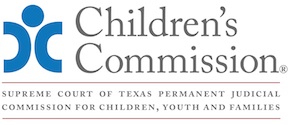C. Hearing
1. Persons Who Should Always Be Present at the Uncontested Adoption Hearing
• Adoptive parents;
• Assigned caseworker; and
• Legal advocate for the child and/or guardian ad litem/CASA.
2. Persons Who Should Be Present at the Contested Adoption Hearing
• Prospective adoptive parents;
• Assigned caseworker;
• Agency attorney;
• Legal advocate for the child and/or guardian ad litem/CASA;
• Parties contesting the adoption; and
• Attorneys for all parties.
Special Issue: In a contested adoption, enough time must be set aside for the completion of a careful and complete hearing. Each court must determine the typical range in length of contested hearings and establish a calendar to accommodate such hearings without the need for postponements and delays. |
3. Adoption Hearing Takes Precedent Over Other Settings
If the social studies and criminal history records are filed, the adoption hearing is to be set and heard preferentially to any other civil case not given preference by other law. Tex. Fam. Code § 162.0045.
Special Issue: A number of judges have developed a special ceremony for consummating an adoption, including letting the child bang the gavel, the judge descending from the bench to join family in pronouncement, and including all extended family members and guests in the proceedings. Most families will want to take photos with the judge when the hearing is concluded. |
The court may not delay or deny an adoption because a petitioner is a member of military or on the basis of race or ethnicity. Tex. Fam. Code § 162.0025 and Tex. Fam. Code § 162.015.
Upon granting the adoption, the court may order the sealing of the court’s file. Tex. Fam. Code § 162.021(a).
Special Issue: Some jurisdictions prefer utilizing the same court which handled the termination of parental rights case for the adoption proceedings involving the same child. If the proceeding is a combined termination and adoption, courts may want to set forth explicitly and thoroughly the conditions and circumstances under which parental termination and consent to adoption is obtained, including determining whether the consent was voluntary and informed and that all alternatives to adoption were explained. A thorough record protects the court and adoptive parents if there is a later attempt to set aside the termination and/or adoption. |
